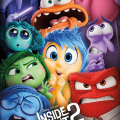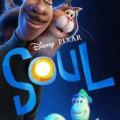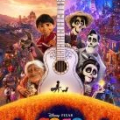Win or Lose
Win or Lose
The experience felt simultaneously personal and resonant, leaving me formulating my thoughts on the innovative methods used to bring the film’s universe to life.
Visual Poetry in Every Frame
From my very first viewing, I was struck by the exceptional visual style of Win or Lose. The cinematography is a delicate balance of refined artistry and raw emotion. Deep, saturated colors and thoughtful lighting work in tandem to convey the mood of each scene. There are moments when the camera’s gentle pan over a richly detailed background filled me with wonder, and other times when close-up shots captured the vulnerability of the characters in a way that resonated deeply with me. I found that every frame felt like a carefully composed painting, each nuance and texture contributing to the overall atmosphere of the film.
Soundscapes that Echo the Heart
The auditory experience in Win or Lose is an immersive journey of its own. The soundtrack interweaves subtle orchestral movements with modern sound design elements, creating a unique backdrop that resonates on both emotional and sensory levels. When I listened closely, I could hear layers of sound that convincingly mirrored the internal struggles and triumphs of the characters. The music did not just serve as an accompaniment but elevated every narrative beat with its rhythmic pulse, guiding me emotionally through the crescendos and quiet interludes in the film.
Narrative Threads and Unpredictable Twists
What left me truly spellbound were the narrative choices made in Win or Lose. The storyline is meticulously structured to balance suspense with introspection, weaving together multiple threads that at times felt both distinct and interconnected. It is as if each scene was designed to challenge my assumptions and invite me to question the broader themes unfolding before my eyes. I appreciated how the plot never strayed into predictable territory, ensuring that my engagement was maintained throughout. Every twist was thoughtfully positioned, offering subtle commentary on issues of fate, ambition, and human resilience.
Emotional Resonance through Character Depth
The true strength of the film, for me, lay in the richness of its characters. Each persona is rendered with exceptional depth, complete with insecurities, aspirations, and transformative journeys that mirror real human emotions. Observing the characters evolve, I felt as if I was walking alongside them, sharing in their internal conflicts and moments of quiet introspection. Their interactions, whether wrought with tension or reflective camaraderie, challenged me to consider the power of personal transformation and connectedness. The film never shied away from presenting complex emotions, which made my own reflections on life all the more poignant.
Innovative Storytelling Techniques
Win or Lose pushes the envelope when it comes to narrative experimentation. The non-linear storytelling approach invited me to piece together fragments of the narrative, much like assembling a puzzle, which was both intellectually stimulating and emotionally rewarding. I encountered scenes that flashed back to reveal intimate details of a character’s past, while other sequences leaped forward, hinting at a future shaped by the choices made today. This rhythmic manipulation of time compelled me to actively engage with the narrative, challenging my perception of cause and effect and urging me to appreciate the art of storytelling itself.
Cinematic Performance and Directorial Vision
The director’s vision reverberates throughout Win or Lose, a vision that marries bold experimentation with a clear sense of purpose. As I watched, I could discern layers of meaning in every decision made, from the subtle use of shadow and silhouette to the decisive framing of complex dialogues. There was a distinct rhythm in the pacing, a mindful cadence that allowed contemplative pauses while still propelling the narrative with fervor. The director managed to create an environment where the visual language and narrative ambition complemented one another, affording me a multi-dimensional experience that felt both immersive and stimulating.
Performance Dynamics and Actor Chemistry
The ensemble cast of Win or Lose demonstrates impeccable chemistry and dedication to their roles, making the film's intricate character dynamics feel authentic and compelling. I found their performances to be nuanced and layered, each actor delivering a portrayal that teetered gracefully between vulnerability and strength. In scenes laden with underlying tension, their interactions were electric, and every exchange carried an emotional weight that resonated with my own experiences. The actors tackled their roles with an intensity that encouraged me to explore my emotions, as I recognized hints of my own struggles and triumphs mirrored in their performances.
Interplay of Light and Shadow
The film's aesthetic choices, notably its interplay of light and shadow, left an indelible impression on me. I was particularly fascinated by how the filmmakers used contrasting visual elements to symbolize the eternal conflict between hope and despair. Details as subtle as a play of sunlight through fog or the stark contrast of urban neon against the darkness of night instantly captured my attention. These artistic decisions were more than mere visual flourishes—they were integral to the storytelling process, offering metaphoric insight into the characters' inner worlds. I could feel the visual rhythm echo in every scene, turning the medium of film into a visceral sensory experience.
Technical Brilliance and Special Effects
While the narrative and emotional landscape are the film's heartbeat, the technical aspects of Win or Lose are equally compelling. I admired the seamless integration of special effects with practical sets, resulting in sequences that were both visually striking and narratively coherent. The meticulous attention to detail in every shot underscored a genuine commitment to authenticity, from the realistic portrayal of physical environments to the digitally enhanced spectacles that punctuated pivotal moments. The blend of practical effects and sophisticated digital artistry created a world that felt palpably real, immersing me further into the storyline as technical mastery met creative storytelling.
Intellectual Undertones and Philosophical Layers
Beyond its visual and narrative splendor, Win or Lose is a film that invites contemplation through its layered philosophical discourse. As I navigated the unfolding events, I could sense an underlying dialogue about the inevitability of choices and the often ambiguous nature of success and failure. The film deftly explores these themes without resorting to overt didacticism, allowing the emotional gravity of each moment to speak for itself. This subtle infusion of philosophical inquiry enriched my viewing experience, prompting introspection about the uncertainties of life and the complex interplay between fate and free will. The dialogue between characters, infused with quiet moments of reflection and profound statements delivered in hushed tones, left me pondering the deeper meaning long after the scenes had faded.
Interactive Engagement and Story Subtext
One of the most refreshing aspects of Win or Lose was its capacity for interactive engagement. In many moments, the film laid out multiple layers of subtext, encouraging viewers like me to draw our own interpretations. I found that each viewing unearthed new insights, as the weaving of narrative hints and symbolic imagery continually challenged me to think beyond the surface. This dynamic interplay between explicit storytelling and nuanced subtext added an element of discovery that elevated the overall experience. I appreciated how the narrative was like an open canvas, inviting personal interpretation and re-evaluation with each encounter, which made every subsequent watching feel like uncovering a hidden treasure trove of meaning.
Temporal Rhythm and Pacing
Throughout its runtime, the movie maintained a rhythm that was both deliberate and reflective. I noticed that the pacing, carefully crafted to guide my emotional journey, was one of its most compelling technical aspects. At times, the film meandered into thoughtful, lingering moments that allowed me to reflect deeply on what had just transpired. Conversely, there were instances when the tempo picked up, aligning with the escalating tension and dynamic developments unfolding on screen. This effective modulation of pace kept me engaged and on edge, ensuring that each segment of the narrative delivered its intended emotional impact without feeling rushed or underdeveloped. The careful balance between slow, reflective pauses and energetic bursts of action contributed significantly to the immersive quality of the film.
Personal Reflections and Moments of Revelation
As I approached the final chapters of Win or Lose, I found myself enveloped in a cascade of personal reflections and unexpected revelations. There were moments where I caught myself completely absorbed in the storyline, connecting deeply with the characters' choices and internal conflicts. I remember being particularly touched by a sequence where the delicate interplay of character motivations and visual symbolism converged to create a scene that felt almost poetic in its emotional resonance. Every subtle cue in a performance, every meticulously framed shot, invited me to explore my personal experiences and perspectives, forging an intimate connection with the film. What made the experience truly personal was this invitation to introspection, a kind of cinematic mirror through which I could examine my views on successes, failures, and the ambiguous journey that lies between them.
Innovative Integration of Themes and Visual Metaphors
Throughout my viewing, I was continually impressed by how Win or Lose interwove its central themes with a tapestry of visual metaphors. The film employs a variety of artistic devices, from symbolic imagery to recurring motifs, all of which contributed to a layered narrative structure that was as intellectually engaging as it was emotionally stirring. I observed that each carefully placed visual cue was designed to evoke specific moods or to hint at deeper meanings lurking beneath the surface dialogue. The creative integration of physical space, scenery, and even the subtle motion of the camera served to reinforce the film’s exploration of fate and fortitude. This multi-faceted approach to thematic storytelling allowed me to appreciate the film as a richly textured mosaic of art and philosophy, where every detail was purposeful, and every moment contributed to an overarching narrative of resilience and introspection.
Immersive Environments and Set Designs
Another facet that heightened my engagement with Win or Lose was its meticulous attention to immersive set designs and environments. I found that the visual environments weren't just backdrops; they were active participants in the storytelling process. Each setting was crafted with an artisanal quality that reflected both the inner landscapes of the characters and the broader themes of the film. Whether it was an urban arena pulsating with energy or a quiet, contemplative space suffused with natural light, every location was imbued with a unique character. I was particularly drawn to how these environments influenced the narrative itself, echoing the internal struggles of the characters and setting the stage for moments of intense personal revelation. The careful orchestration of these sets made the experience of the movie feel all the more real and immersive, compelling me to lose myself in its atmospheric embrace.

















Leave a comment
Your comment is awaiting moderation. We save your draft here
0 Comments